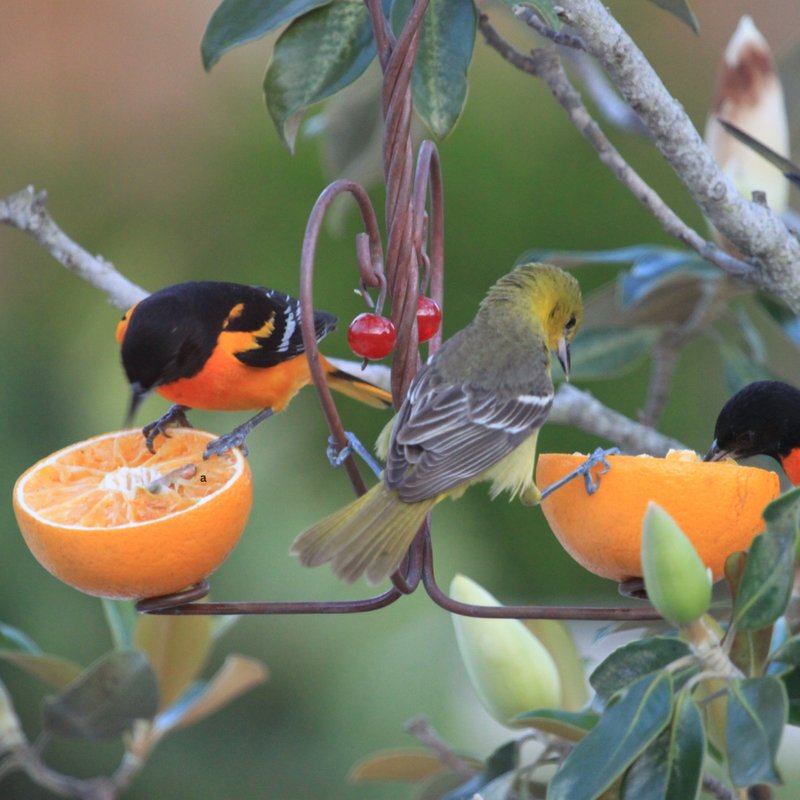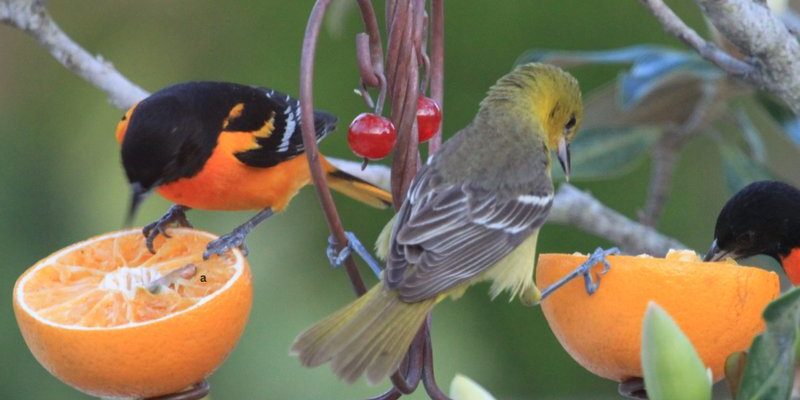
Inchworms, a common sight in many gardens, are the caterpillar stage of various moths. They wiggle like tiny, hungry snakes, inching their way along branches and leaves. By creating a bird-friendly environment that attracts species that feast on these little critters, you’re not just beautifying your space; you’re supporting local wildlife. So, let’s explore how to make your garden a hotspot for birds that love inchworms!
Understanding the Birds That Eat Inchworms
Not all birds share a penchant for inchworms, but several species do. Birds like **warblers**, **swallows**, and **woodpeckers** are known to enjoy munching on these larvae. Each of these birds has its unique way of hunting for inchworms, making them fascinating guests in your garden.
Warblers, like the **Yellow Warbler** or the **Common Yellowthroat**, often flit about in shrubs and trees, using their keen eyesight to spot inchworms hiding among the leaves. Swallows, on the other hand, are agile flyers that capture inchworms mid-air, swooping and diving with grace. Woodpeckers are also skilled hunters; they can peck into bark to find inchworms hiding within.
Bringing these birds into your yard can create a lively ecosystem. Think of it as nature’s version of a TV series—you never know what might happen next as these birds interact with each other and their surroundings.
Creating a Bird-Friendly Environment
Now that you know which birds are after those tasty inchworms, let’s talk about how to create a space where they can thrive. A **bird-friendly yard** is like a well-planned restaurant: everything is designed for your guests’ comfort and satisfaction.
Start by planting native trees and shrubs; these plants provide excellent habitats for both the birds and the inchworms. Oak trees, for instance, are a favorite among many bird species and are known to support a wide variety of caterpillars, including inchworms. Additionally, creating a mix of foliage levels gives birds places to perch, hide, and hunt.
Water sources are equally important. Consider adding a small birdbath or a shallow water dish. Birds need to stay hydrated, and a fresh water source will encourage them to stick around. What’s more, the sound of water can be quite inviting, making your garden feel more alive.
Encouraging Inchworm Presence
To attract inchworms, you’ll need to make your garden a welcoming place for them, too. It’s a bit like inviting your friends over for dinner—if you want them to show up, you need to offer something to eat!
Inchworms thrive on **deciduous trees**, such as maples and birches, and they love plants that offer plenty of tender leaves. Consider planting more of these trees, and avoid using harsh chemicals that could harm the inchworm population. By maintaining a healthy garden ecosystem, inchworms will find their way to your yard, bringing your feathered friends along for the feast.
Additionally, leaving some decaying matter or mulch around can create a nurturing environment for inchworm eggs. Just like how you might keep snacks out for your friends, this will keep inchworms happy and ready for birds to munch on.
Providing Natural Shelter
Birds love to feel safe while they eat. Imagine trying to enjoy a meal in a crowded diner—you’d want a cozy booth, right? Providing natural shelter in your garden is vital for attracting birds that feed on inchworms.
You can create safe spaces by letting shrubs grow a bit wild or installing **birdhouses**. Nest boxes can offer a place for birds to rest and keep their young safe while they forage for food. Try to use birdhouses that are specific to the species you’re aiming to attract. For example, a house for wrens is quite different from one for barn swallows.
Dense shrubs and bushes can also offer shelters where birds can hide from predators while they hunt. This encourages them to spend more time in your yard, increasing the chances of spotting inchworms.
Feeding Birds During Off-Seasons
While the summer months can be great for attracting birds with inchworms, winters can be challenging. Honestly, many birds struggle to find food during colder months. However, you can help by providing alternative food sources.
You might be wondering how to do this. Consider offering bird feeders filled with high-energy seeds, suet cakes, or mealworms. These foods can supplement their diet when natural sources, like inchworms, are scarce. Keep your feeders clean and filled regularly to create a dependable food supply.
Also, don’t forget about the importance of having a reliable water source. A heated birdbath can be a lifesaver in winter and will attract birds to your yard even when inchworms are nowhere to be found.
Understanding Seasonal Changes
Bird activity, like the seasons, varies throughout the year. During spring and summer, many birds are actively searching for inchworms to feed their young. In contrast, autumn is often characterized by migration, where many birds will leave your area for warmer climates.
As a bird enthusiast, it’s important to adapt your strategies based on the season. In winter, focus on providing feeders and water sources. In spring and summer, invest in plants, natural shelters, and habitat features that encourage a larger population of inchworms.
To keep your garden lively year-round, think about introducing plants that bloom in different seasons. This ensures that birds have something to eat throughout the year.
Attracting birds that feed on inchworms can transform your garden into a vibrant ecosystem. Not only are you helping these birds find food, but you’re also creating a natural harmony in your backyard. It’s a win-win!
By planting native species, providing shelter, and ensuring there’s food available year-round, you’ll invite a variety of birds into your space. It’s exciting to sit back and watch them flit about, each one playing a role in the delicate balance of nature. So grab your gardening gloves and get started—your feathered friends are waiting for their next inchworm dinner!

